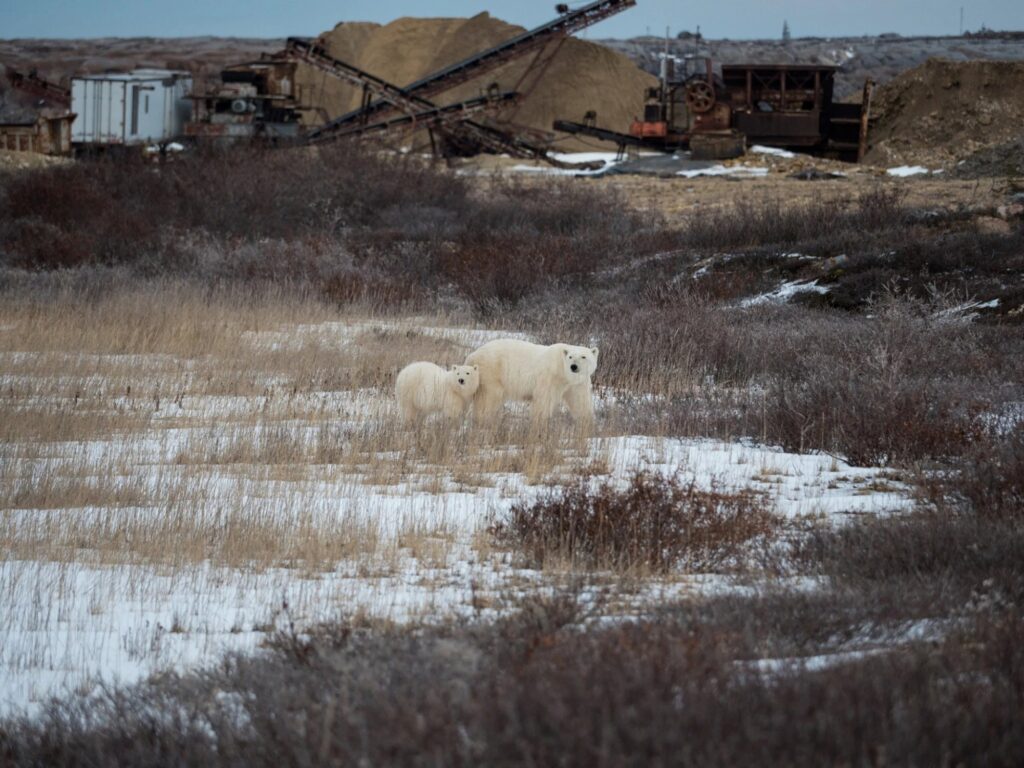
- Polar bears are under threat from global warming, with the Arctic warming four times faster than the rest of the world, causing them to migrate to land.
- The creatures end up in human societies, where waste is a bountiful but deadly food source.
As their arctic environment fades, hungry polar bears are flocking to garbage dumps to feed their tummies.
On Wednesday, a group of Canadian and American experts cautioned that as polar bear populations become increasingly reliant on landfills near northern settlements, waste poses an emerging threat to already vulnerable polar bear populations. According to the article published in the journal Oryx, this is causing lethal disputes with people.
“Bears and garbage are a bad combination,” said co-author and University of Alberta biologist Andrew Derocher. “We know that from brown bear and black bear perspectives, and now it’s a problem with polar bears.”
Polar bears hunt seals on sea ice. However, because the Arctic is warming four times faster than the rest of the planet, sea ice melts earlier in the summer and freezes later in the fall. As a result, bears are forced to spend more time ashore, away from their natural prey.
Polar bears are gathering in large numbers around open dumps in the Arctic and sub-Arctic, such as Russia’s Belushya Guba, and whale bone piles left over from Inuit hunts near Kaktovik, Alaska, to fatten up, according to the report.
Such behavior is dangerous. Local wildlife managers may kill bears for public safety reasons. Furthermore, bears can become ill from consuming garbage.

Wrappers are frequently frozen into food scraps, resulting in polar bears ingesting plastic and other non-edible things. This can result in fatal obstructions.
“Bears aren’t aware of all the harmful consequences of plastic consumption, as well as the diseases and chemicals they’re likely exposed to in a (landfill) situation,” said co-author Geoff York, senior director of conservation at Polar Bears International, an advocacy group.
According to scientists, the situation is expected to worsen. The Arctic’s human population is growing. Nunavut, Canada, home to hundreds of polar bears, is expected to rise by roughly 40% by 2043.
Improving waste management in distant areas remains a challenge. The ground is frequently frozen, making it difficult to bury trash. And hauling it out is costly. According to scientists, federal funds will be required to solve the situation.
“We’ve already had a couple of human fatalities in the eastern Canadian Arctic,” Derocher said. “It’s surprising how many places that have never had polar bear problems are now experiencing them.”

Leave a Reply